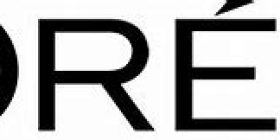PROFIT
Within the fashion and cosmetic industries, the yearning for profit kickstarts many careers. When wanting to grow a business, often money is the main agenda. The generalised meaning of profit is ‘money that is earned in trade or business after paying the costs of producing and selling goods and services’ (Cambridge Dictionary, n.d). To others, the meaning of profit can be metaphorical, whereby profiting in some way does not have to be financially, but environmentally and personally. In 2021, sales growth in the cosmetics industry hit $26.8 billion (Maamoun, 2022). This huge amount of money is generated by popular brands in the United States such as Ulta Beauty and Sephora. Fashion brands such as Goodwill create more than $3.79 billion annually, where any products they don’t sell are sold to outside companies (Hethorn, 2015).
The cosmetics industry consists of a variety of sectors, including: skincare, make up, hair care, fragrances, hygeine products. Statistics from L’oreal’s 2021 Annual Report show that 41.80% of the cosmetics market is from the skincare segment whilst make-up is 15.70% (L’Oreal, 2021). The female skincare market is growing alongside the male. Many brands have advertised male orientated skin care ‘to fulfil the demand and also to maintain them into cosmetic market competition’ (Junaid, 2012). By widening the audience, the number of people who feel they can buy a brand’s products increases, therefore increasing the profit a brand accumalates. Whilst the male skin care industry is expanding, the male make up industry isn’t. With brands still targeting their make up products to a female audience, males may feel excluded from this market, therefore explaining the lower sales. Skin care is a more diverse trade compared to make up.
During uncertain economic times, many brands may see a decline in their markets. During the global pandemic of COVID 19, many stores closed whilst others used it to their advantages. It was thought that in 2020 after the pandemic, the earnings of the cosmetics industry would drop 20-30% (Gerstell, 2020). L’Oreal continued their production of hand sanitizer, a necessity during these times, and provided face masks to medical personnel (Elle, 2020). To thrive in times of jeopardy would mean aiming products at the right audience whilst building a positive memorable reputation. During these times, the bridge between creativity and commerce crumbled. With innovative planning from creative directors and communication with business leaders, a balance between futuristic ideas and profit needs to be examined for a business to flourish.
Bibliography:
Barrett, N.E., 2022. Fashion Fair in a Fenty World: Intersectionality, White Privilege, and the Importance of Black-Owned Brands in the Cosmetic Industry Through Critical Ethnography. Temple University.
Cambridge Dictionary (no date) Profit. Available at https://dictionary.cambridge.org/dictionary/english/profit (Accessed: 21/10/2023)
Dixon, S. (2023) Share of Gen Z users in the United Kingdom engaging with selected social media platforms daily in October 2022. Available at: https://www.statista.com/statistics/1341903/social-media-daily-usage-uk-gen-z/ (Accessed: 14/10/2023).
Elle (2020) How Beauty and Fashion Brands Are Responding to COVID-19. Available at: https://www.elle.com/beauty/a31477276/beauty-brands-respond-coronavirus/ (Accessed: 21/10/2023).
Fenty Beauty (no date) Foundation + Concealer. Available at: https://fentybeauty.com/collections/makeup-foundation/products/pro-filtr-soft-matte-longwear-foundation-420?variant=35178864508973 (Accessed 14/10/2023)
Francis, T. and Hoefel, F., 2018. True Gen’: Generation Z and its implications for companies. McKinsey & Company, 12, pp.1-10.
Gerstell, E., Marchessou, S., Schmidt, J. and Spagnuolo, E., 2020. How COVID-19 is changing the world of beauty.
Hethorn, J., & Ulasewicz, C. (eds). (2015). Sustainable Fashion: What’s Next? A Conversation about Issues, Practices and Possibilities. New York: Bloomsbury
Junaid, A.B. and Nasreen, R., 2012. Determination of consumer behaviour amongst millennials in dermaceuticals (skin care products). International Journal of Marketing Studies, 4(3), p.91.
L’Oreal (2021). Cosmetics Market. Available at: https://www.loreal-finance.com/en/annual-report-2021/cosmetics-market/ (Accessed: 21/10/2023).
Maamoun, A., 2022. THE COSMETICS INDUSTRY IN THE 2020S: A CASE STUDY. Global Journal of Business Pedagogy Volume, 6(1).
Wood, S., 2013. Generation Z as consumers: trends and innovation. Institute for Emerging Issues: NC State University, 119(9), pp.7767-7779.



